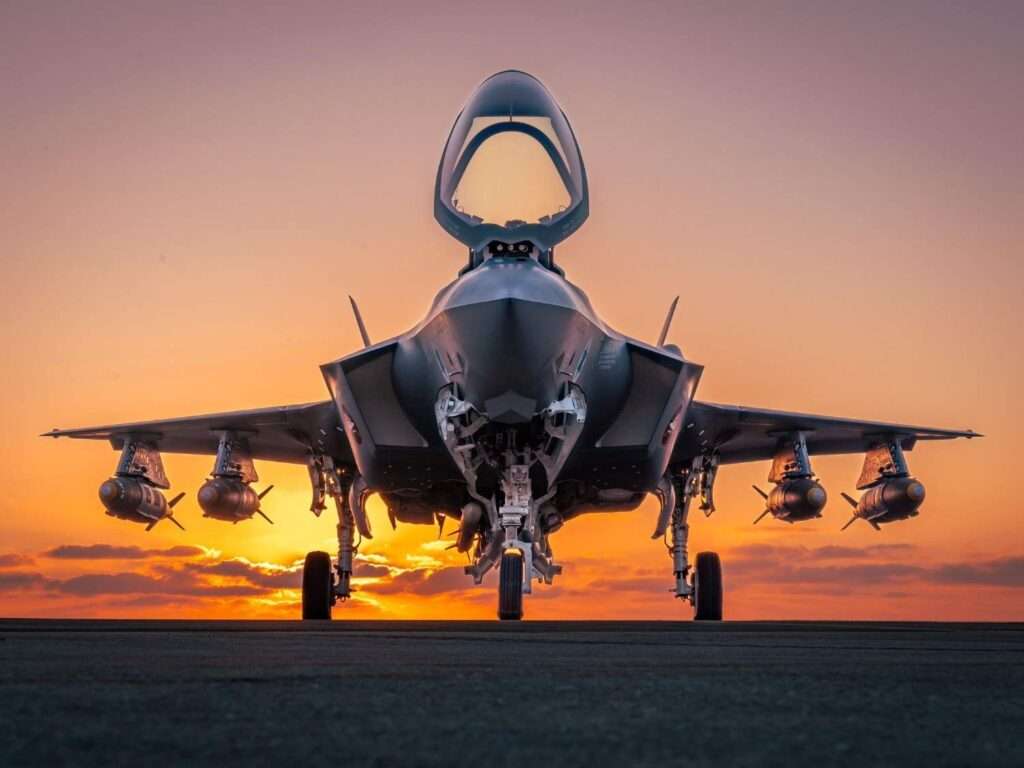In the growing contest between Israel and Iran, the F-35I “Adir” stealth fighter is at the forefront of Israel’s military strategy. This modified variant of the American F-35A allows Israel to conduct precision strikes against, in effect, all Iranian territory against nuclear sites, military assets, and command and control nodes, like never before.
The F-35 Joint Strike Fighter is a single-engine, multi-role stealth aircraft manufactured by US defense contractor Lockheed Martin and flown by nations worldwide. The US military operates three variants of the F-35 jet, the A is for standard take-off (land-based), the B is short take-off and vertical landing, and the C is for ship-based operation. Most allies and partner nations fly one of the three variants; however, Israel is flying a variant unique to them.
Stealth and Deep Penetration Capability
Iran does have a layered air defense system (it is a complex issue), but the relevant technology of the F-35I may provide a significant challenge. With a low radar and infrared cross sections, the F-35I can have a low probability of detection and allow the F-35I to penetrate Iranian airspace and the ability to hold targets at risk which is critical when considering the additional operational complexity of attacking a highly defended target like the Natanz and Fordow nuclear facility. Israel has been known to conduct operations approximately 2,000 kilometers into Iranian territory with strikes on precision targets while circumventing any Iranian surface to air missiles and their integrated radars. The F-35s knocked out Iran’s S-300 systems supplied by Russia, which establishes our air superiority over Tehran,’ said an Israeli Air Force spokesperson. This freedom of action affords us the opportunity for older F-15s and F-16s to follow the F-35s into the country to release precision-guided bombs at the farthest reaches of Iran.
Advanced Sensors and Networked Warfare
The F-35I has an Israeli-customized sensor suite that can detect, identify and geolocate in real time enemy radar emissions. All intelligence capabilities can be shared across Israeli forces, such as drones and other fighter jets to coordinate multi-axis attacks. This networked warfare adds to the situational awareness of Israeli forces and overwhelms Iranian defenses, allowing Israel to conduct hundreds of successful airstrikes with precision and operational effectiveness.
Electronic Warfare and Air Defense Suppression
The F-35I’s electronic warfare systems, developed by Israel to jam and suppress enemy radar and missile guidance, are a key component of the fighter aircraft’s overall effectiveness. The electronic warfare system protects Israeli pilots and aircraft during missions by preventing Iran from mounting effective countermeasures. The F-35I’s electronic wars dominate the battlefield and assist Israel in applying air supremacy in the face of Iran, despite Iranian claims of shooting down F-35s that were later debunked in independent analysis.
Extended Range and Operational Freedom
Israel upgrades have effectively expanded the F-35I range capability so that it can now range out on missions without the need for midair refueling. This operational independence is paramount, especially for the fast action strike deep into Iranian territory while planning a tactical retreat to Israel and augmenting the element of surprise on the enemy. The Israeli modifications managed to allow the F-35I to carry some external precision guided munitions so its capability to strike at targets and flexibility for its flight profile has increased dramatically beyond its original design’s internal capacity.
Real-World Combat Operations and Tactical Development
Since the beginning of hostilities at a new peak, Israel’s F-35I fleet has flown over 15,000 operational flight hours and thousands of combat missions on multiple fronts. This amount of combat experience has allowed the Israeli Air Force to continually develop tactics, develop its electronic warfare strategies and increase the operational envelope of the jet itself, in one of the most contested airspaces on the real planet.
Challenges and Strategic Implications
While the F-35I has significant range and payload capacity, Iran’s most heavily fortified sites, including underground nuclear facilities, are, nonetheless, difficult targets without special-purpose bunker-buster munitions and strategic coordinating. Israeli officials feel that it is not possible to eradicate Iran’s nuclear ambitions; however, air strikes have the ability to delay and erode progress.
Conclusion: Restoring Air Superiority in a World of Complex Conflict
The F-35I “Adir” exemplifies Israel’s strategy toward modern air warfare: stealth, precision, electronic warfare (EW), and real-time intelligence, enabling surgical strikes with a minimum of risk. Its introduction has effectively solidified Israel’s air superiority and the capacity to respond to emergent threats to state security; over the duration of the conflict, the F-35I will remain an integral part of Israel’s national defense strategy in a geopolitical context defined by unresolved tensions and strategic ambiguity.

